Stories about weapons. Small amphibious tank T-40
To begin, I think, it is worthwhile to admit the fact that the small amphibious tank T-40 was the pinnacle of the development of its class cars in the Soviet Union. Actually, on it the class of small floating light tanks and ended.
And at the same time, it is impossible not to admit that of the entire range (T-37A, T-38 and T-40) he was the most constructively brought to mind, that is, to full release and participation in hostilities.
As part of the existing tactics of the use of T-40 was very good. He fully met all the requirements for the application. Intelligence, communications, combat convoy columns on the march - no problem, the machine coped, unlike its predecessors.
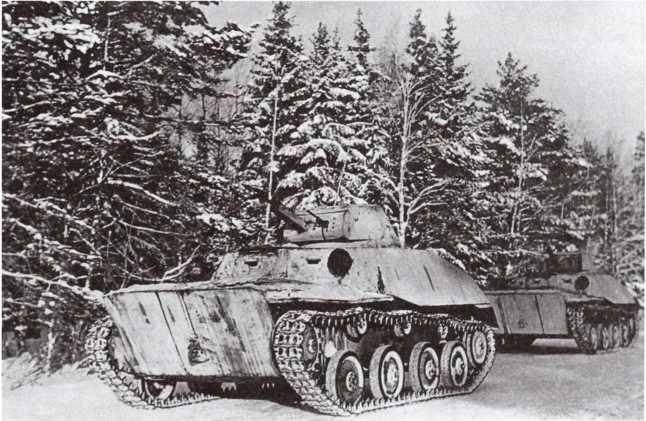
Moreover, besides myself with the crew, the T-40 could easily move several (up to four) infantrymen with full equipment on land and a couple on the water, which on T-38, for example, was unrealistic.
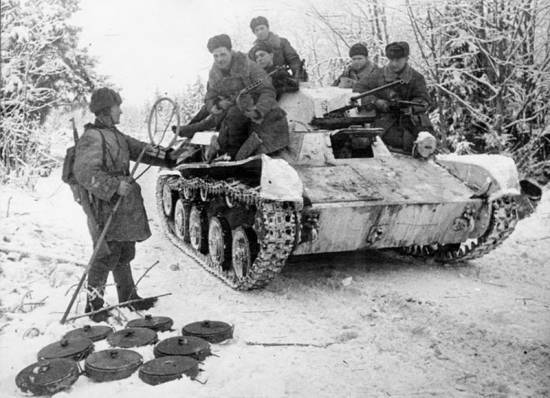
The armament also changed, and a pair of machine guns of various calibers allowed them to maintain their infantry in battle and even fight the enemy’s lightly armored vehicles. DShK caliber 12,7 mm was able to break into both an armored personnel carrier and a light tank.
Plus very good throughput and buoyancy.
The tank really was a success, despite the rather creepy appearance history.
The most significant disadvantage of the T-40 was the congestion of the tank commander inherited from the T-37A. He was probably the most miserable man in the tank forces of the Red Army, since the commander of the T-40 would have been nice to be born as an octopus. And octoglaze.
The tank commander served as a gunner, loader, radio operator (if the tank was radioed), coordinated with other tanks and supervised the driver-mechanic ...
In general, that is still the position.
But no matter how small crew, no matter how overloaded the commander, not the main problems of the tank. It is clear that at the beginning of the Great Patriotic War, in view of the huge losses of tanks (both combat and non-combat), the T-40 began to be used as a tank of direct support for infantry.
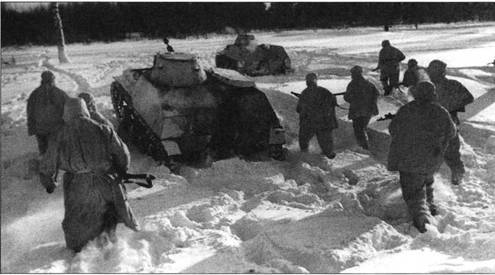
"That was the time." Yes, the time was exactly that, but the use of a floating reconnaissance tank as a light tank to support infantry ... Would have been forgiven if it had not been so insulting.
What is the main requirement for a linear tank? Availability of weapons and booking. Point.
Well, which of the T-40 linear tank? It is clear that even the T-26, which was not the crown of tank building, looked better in this role.
But here is another. In the design of the T-40 a substantial reserve was laid, which made it possible to quickly develop, on the basis of a light tank, a more secure and more powerfully armed, in comparison with the initial version, a light tank T-60. But this is a completely different (in secret I will say the following) story.
And during the war, they began to massively produce "land" versions of T-40С and Т-30, which were deprived of the opportunity to swim, but with enhanced armor and cannon armament.
And to say that these light tanks were useless is to say the silliest nonsense.
Yes, "from the border we turned the Earth back, it was a matter from the beginning." But then everything went in the opposite direction, as is well known. And, forcing on the teeth of the Dnieper, Dniester, Danube, Vistula, the Soviet commanders more than once remembered abandoned and burned amphibious tanks in their memoirs.
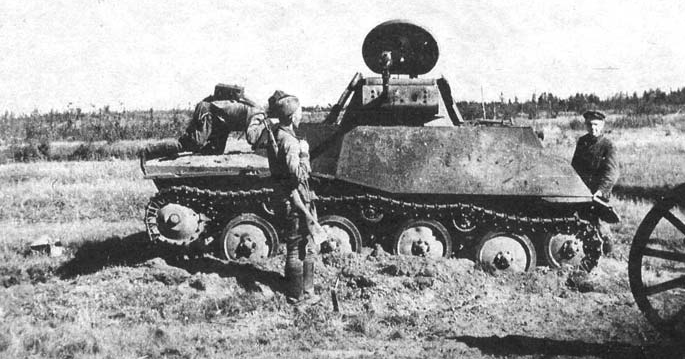
Even the sporadic survivors of the T-37A and T-38 benefited from their machine guns, let alone more serious machines like the T-40. But mostly our soldiers forced the rivers on improvised boats without any support, suffering heavy losses from enemy fire.
Meanwhile, a maneuverable, fast and floating T-40 could seriously help in capturing and holding bridgeheads on the other side of the water barrier.
Moreover, today we all calmly perceive lightly armored amphibious vehicles, often armed with machine guns. Only instead of tracks - wheels, and the topic is still the same. It is clear, about whom I, about BRDM and its analogues in many countries of the world.
We talk a lot about the backwardness of Soviet industry, as we lacked everything in those years: designers, motors, machine tools, technologies. And this is true, it was.
But here's what I still cannot understand, although I am already writing the third article on amphibious tanks, this is how we managed to do it at all. After all, if you look at tank encyclopedias and catalogs, then the terrible picture turns out: among the foreign technology of the time, the T-40 has practically no analogues.
It can be long and tedious to compare T-40 with German T-I, Italian L6 / 40, Japanese “Ha-Go” or “Ka-Mi”. Someone T-40 exceeded in firepower, someone in speed, and someone took the ability to swim. More precisely, of all the listed classmates, Ka-Mi could swim, but how!
It was necessary to unwind the floats and install them on the sides of the tank. And after going to land, respectively, reset them. And T-40 was ready to force any water obstacles 24 hourly per day 365 days a year without any preparation at all.
We add here high reliability and fairly high manufacturability of the design. I would say that T-40 was not just an outstanding creation by N. A. Astrov and his staff, it would be a very formidable machine in direct hands.
Tank was not lucky, like many others, to take the first blow. But this is not an isolated, unfortunately, example in our history. And the fact that the tank had such a fate, it became clear at the beginning of his difficult path.
Generally, initially, in 1937, the Main Armored Directorate (GABTU) of the Red Army ordered a completely different car. It was a project of a wheeled-tracked tank weighing 5-6 tons with a diesel engine rated at 150 — 180 l. with. The project of the machine received an index T-39.
Astrov spent a lot of time to prove the groundlessness of the project, and proved. First of all, we did not produce such a diesel engine. Further, Astrov simply offered his project of a new and completely different from the English base "Cardin-Loyd" tank.
According to the T-40 project, even two options were developed - one of the Astrov, the second of Shitikov. After preliminary design, both options were discussed. Accepted version of the machine Astrov.
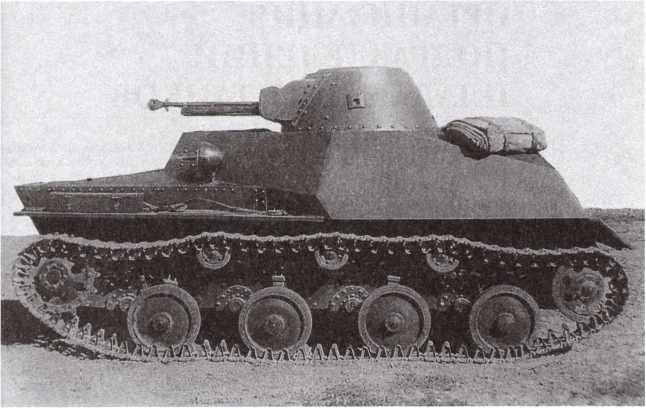
There was also a project with a chassis from the Komsomolets tractor, but he did not go into the series.
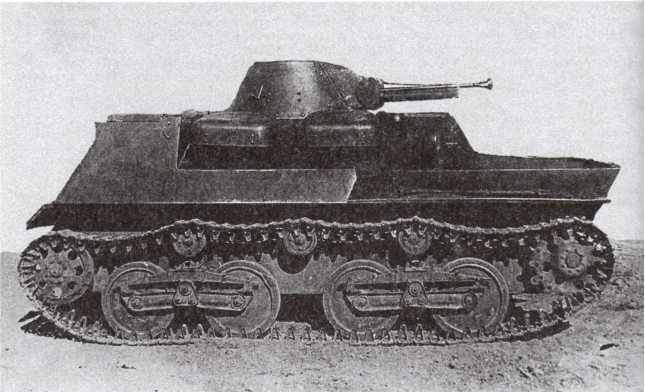
The design of the tank ended at the end of 1938, and the drawings were immediately transferred to production. By the spring of 1939, the first samples of the car were collected and went to the test.
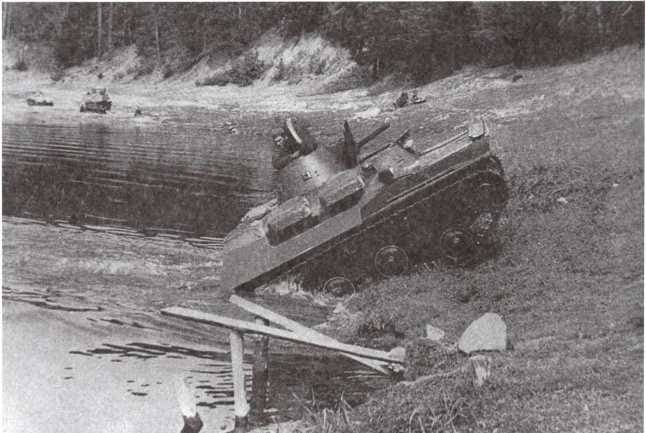
The new tank was significantly different from its predecessors T-37A and T-38. The car received an enlarged body, welded from 6-13-mm armor plates. To increase the stability afloat, the hull had a trapezoidal (in cross section) shape with an expanded upper part.
The crew of the car consisted of two people - the driver, located on the axis of the tank, and the commander, who was in the tower, installed behind the driver with the offset to the left side.
Armament of the tank compared to its predecessors was strengthened. In the tower, which had the shape of a truncated cone, mounted twin installation 12,7-mm machine gun DShK and 7,62-mm DT.
Most of the ammunition for DShK (9 coupled tapes = 450 cartridges) was placed in a special ring box under the tower, another tape (50 cartridges) was in stock. Such an ammunition ensuring the continuity of the machine gun power significantly increased the rate of fire, and most importantly, the only shooter was distracted by reloading only one DT machine gun.
Was, as it is now said, competitive T-40 on the battlefields of the Great Patriotic War?
The answer is the same: if used wisely, it was.
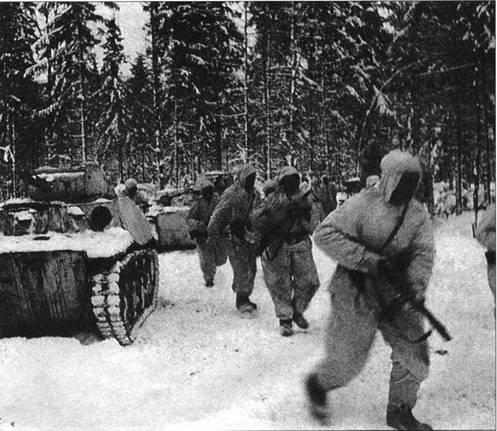
In this respect, the battle of the 1 Tank Brigade of the Red Army of the South-Western Front 22 of September 1941 is more than indicative. The brigade consisted of 7 KV, 33 T-34 and 32 of the T-40 tank (including several vehicles without navigational equipment) and acted against parts of the Wehrmacht X-division of the Wehrmacht and SS division "Das Reich".
Here is how this battle was described in the 1 Tank Brigade's combat logbook, which by September 21 of 1941 was in the area of Rezniki and Lipovka with the task of preventing the enemy’s bypass from the south of the 5 Cavalry Division:
“In 10: 30 22.9.41, part of the SS Reich division launched an offensive from the direction of Long Luka to Lipovka. The offensive was supported by strong mortar fire, two 105-mm artillery batteries and a company of tanks.
Having let the enemy on 700 – 800 meters, he was met with fire from heavy and medium tanks, as a result of which, having suffered heavy losses, the infantry lay down, and the tanks began to retreat.
Taking advantage of the enemy's confusion, 1 TB 1 TP (T-40 tanks, according to the documents of the brigade headquarters, all the 32 battalions in the battalion took part in the counterattack, as a result of which reached the forest north of Dolgaya Luka, destroying with fire and tracks of infantry and weapons of the enemy, the tanks returned to the assembly point.
Despite the losses suffered, the enemy strengthened its advanced units, summing up reserves, launched a new attack.
The attack was not successful. To completely clear the area from the enemy, a motorized rifle company was allocated and by that time the battalion of the 1 Guards approached. rifle division. The battle lasted all day ... Part of the brigade during the day conducted 7 attacks, as a result, the enemy was defeated and scattered. Opponent lost:
Anti-tank guns - 13 pcs;
Tools 105-mm - 4 pcs;
Mortars - 7 pcs;
Motorcycles - 16 pcs;
Machines with fuel - 2 pcs;
Tanks - 6 pcs;
Aircraft - 1 pcs.
Up to two mouth infantry.
In this battle, the team lost:
Tanks T-40 - 4 pcs;
Killed - 32 pax;
Wounded - 56 people;
Missing - 11 people. ”.
The most interesting thing here is that in their reports the Germans confirm their losses. In particular, the 4 Panzer Division reported the loss of 9 guns "crushed by tanks." In addition, she also pointed out 89 people killed and wounded, lost only by the 1 Battalion of her 12 Motorized Rifle Regiment during the September 22 battle.
Proper application. What the Red Army lacked in those days. Heavy medium tanks acting from cover, destroy enemy tanks, light tanks complete the rout.
TTX T-40
Combat weight, t: 5,5
Crew, prs: 2
Number released, pcs: 960
Dimensions:
Body length, mm: 4110
Width, mm: 2330
Height, mm: 1905
Ground clearance mm: 300
Booking:
Type of armor: cemented rolled high hardness
Forehead housing (top), mm / deg: 15-20 / 10 °
The forehead of the body (bottom), mm / deg: 13-15 / -30 °
Chassis side, mm / deg: 13 — 15 / 25 °
Body feed, mm / deg: 13 / 35 °
Bottom, mm: 5
Housing roof, mm: 5
Tool mask, mm / degree: 10-20
Board turret, mm / deg: 15-20 / 25 °
Roof of the tower, mm: 5
Armament:
Machine guns: 1 × 12,7-mm DShK (500 cartridges), 1 × 7,62-mm DT (2016 cartridges)
Mobility:
Engine type: inline 4-stroke 6-cylinder carburetor
Engine power, l. S .: 85
Highway speed, km / h: 44
Speed over rough terrain, km / h: 20-25
Speed afloat, km / h: 5-6
Cruising on the highway, km: 300
Cruising over rough terrain, km: 120 — 150
Already during the war, the T-40 cannon versions were developed and used (albeit in scanty quantities). The tanks were equipped with 20-mm ShVAK-T cannon (TNSh) with 750 rounds of ammunition, and the DT ammunition in this case was reduced to 1512 cartridges (24 disc).
But in principle, this was one of the steps to the appearance on the battlefield of the T-60 tank, and we will consider the use of the TNS in relation to this machine.
Water propeller consisted of a propeller in a hydrodynamic niche and rudders. To ensure the movement afloat on the tank, a wave deflector plate, a heat exchanger and a pumping out (bilge) pump were installed.
The cork rescue belts for the crew were included in the tank package!
And one more thing to keep silent about is harm. For orientation when moving afloat or in fog, as well as in reconnaissance, at a distance from the coast (!), A magnetic compass made by the Aviapribor plant in Moscow was installed on the T-40.
The tank's seaworthiness was quite high - he could confidently carry out his tasks during the agitation up to 3 points, and in calm water to carry a load of considerable mass.
But the main thing was later. When, based on the experience gained in working on amphibious tanks, a true masterpiece appeared - PT-76. But about him (outside and inside) in one of the following articles.
Sources:
Kolomiets M.V. Miracleweapon Stalin. The floating tanks of the Great Patriotic T-37, T-38, T-40.
Shunkov V.N. Weapons of the Red Army.
Historically accurate models of T-40 and T-40С tanks are presented in the exposition of the UMMC Military Equipment Museum in the city of Verkhnyaya Pyshma.
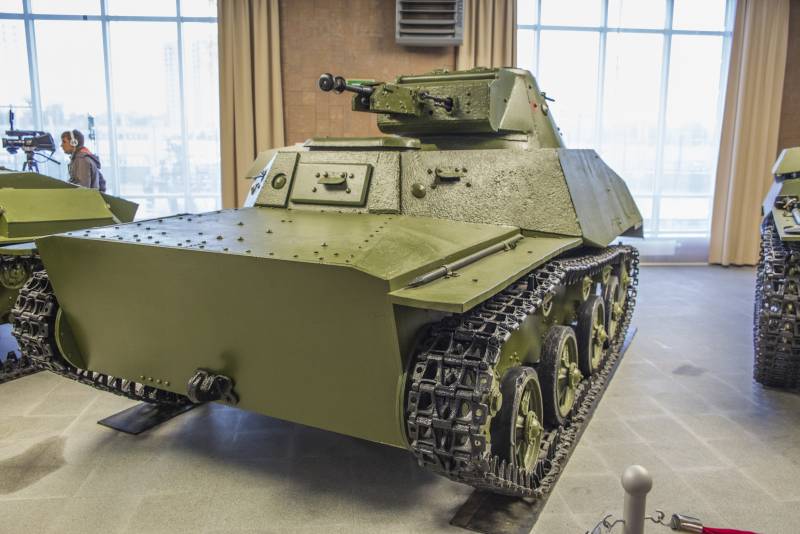
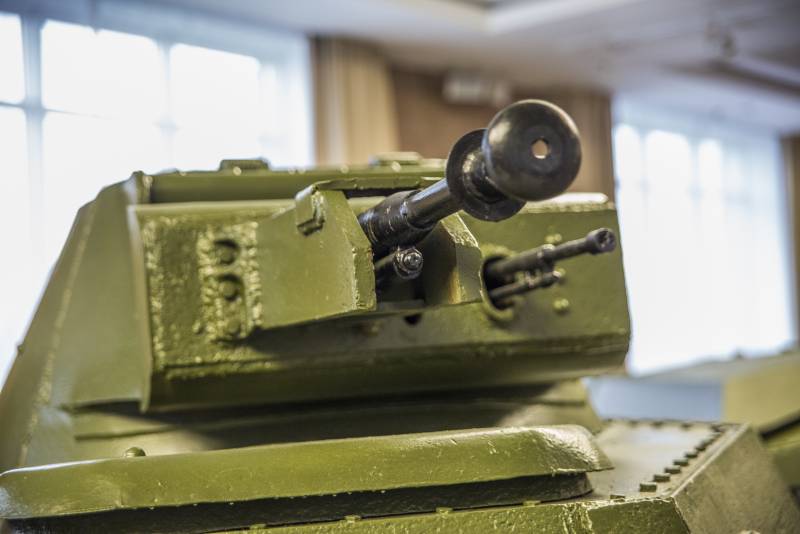
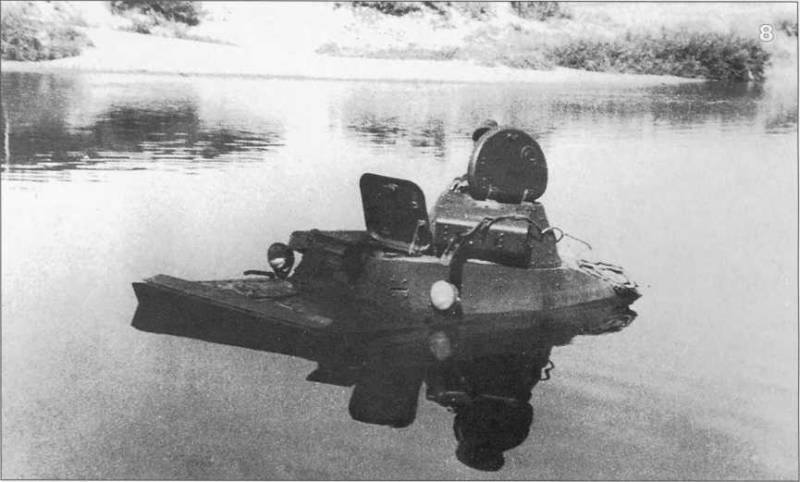
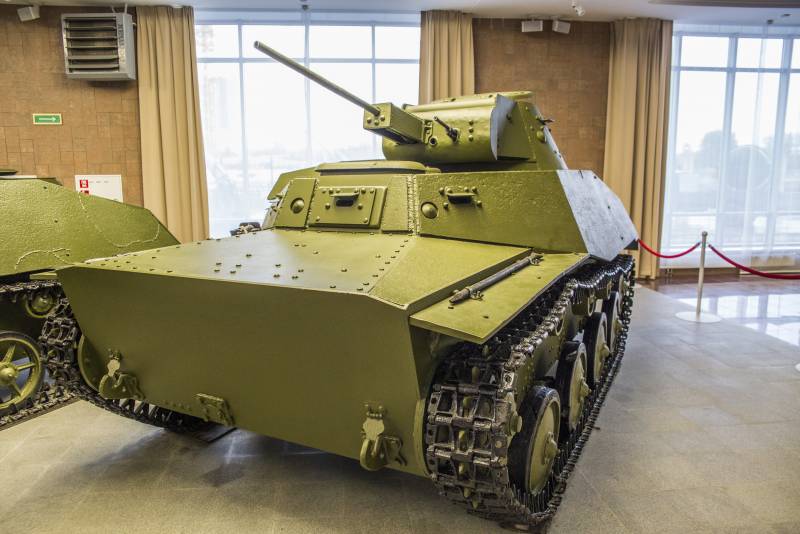
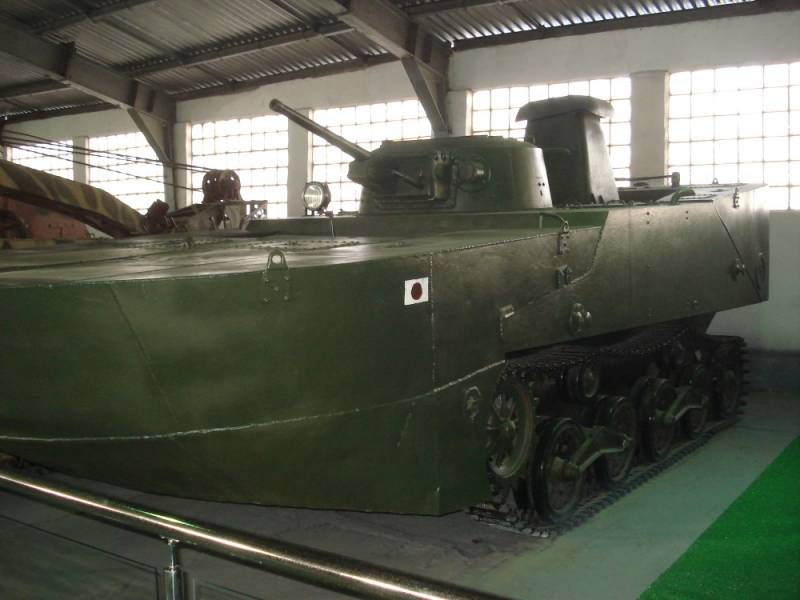
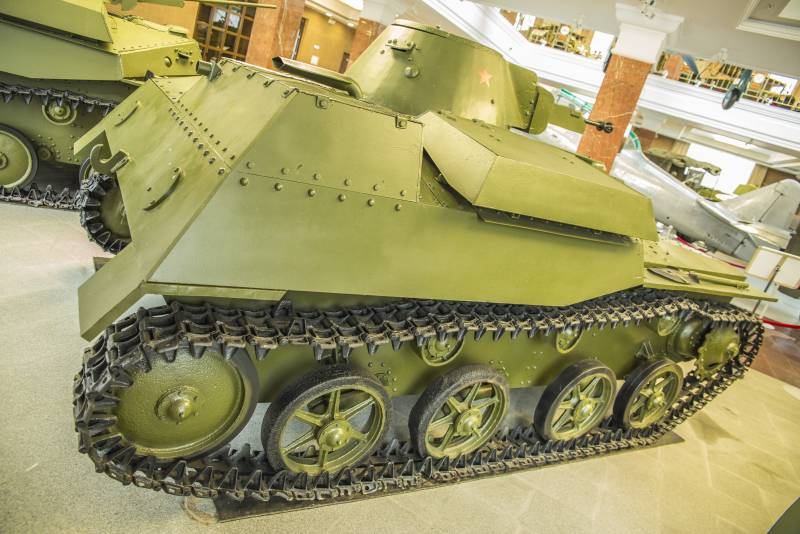
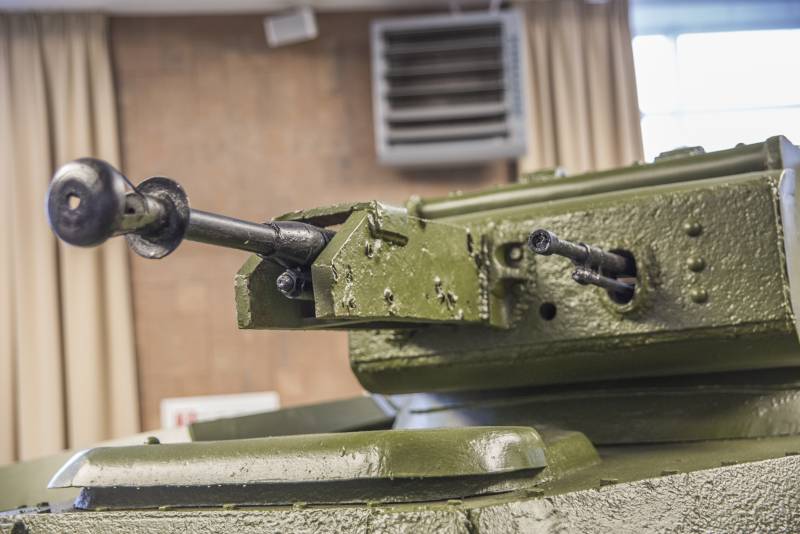
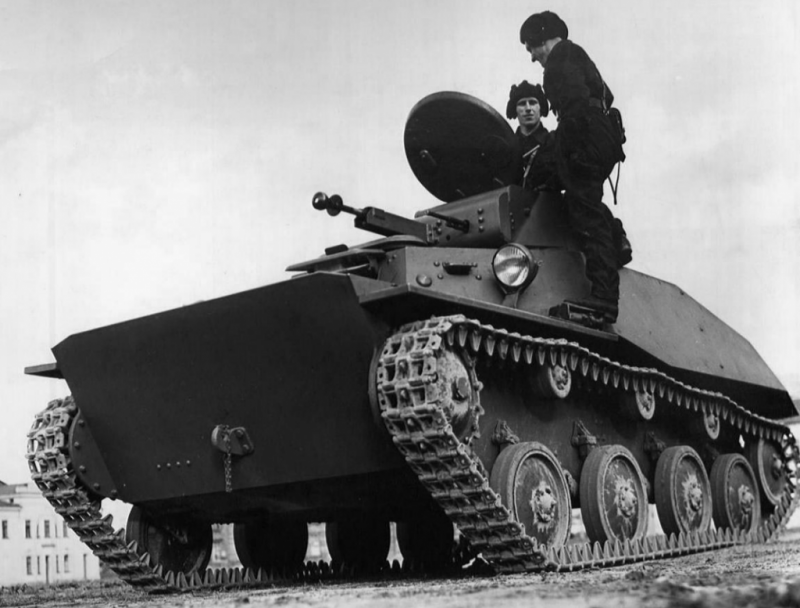
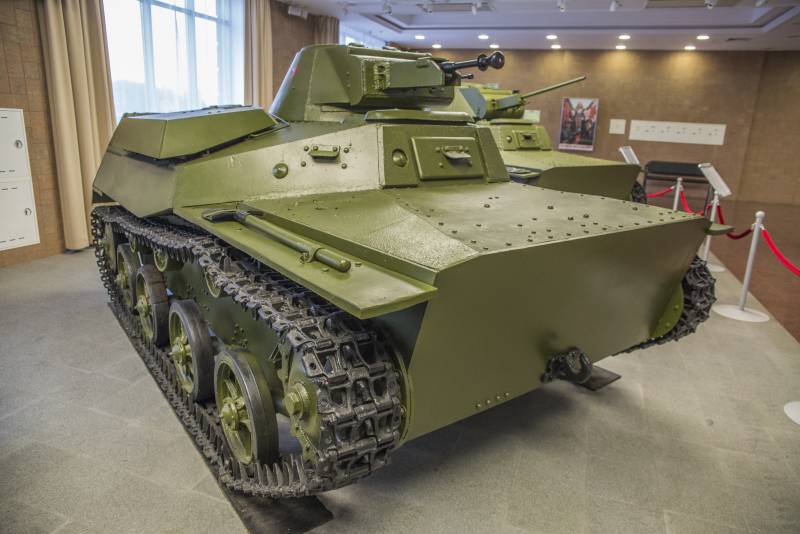
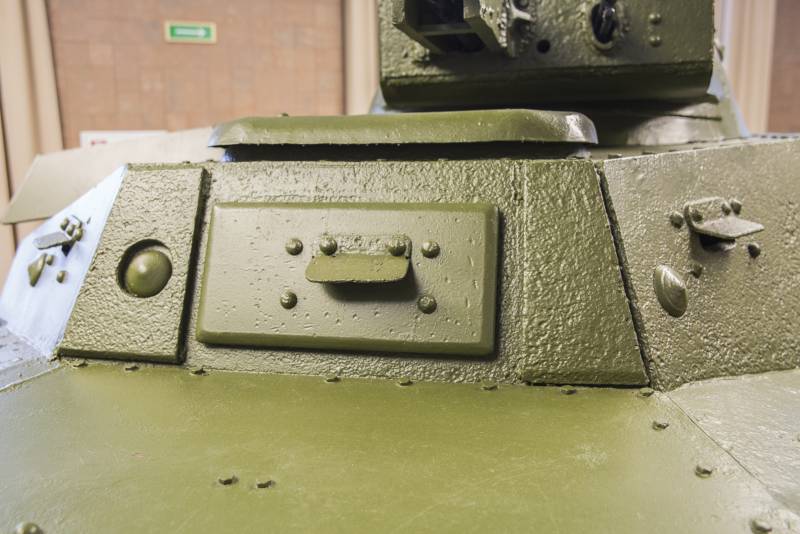
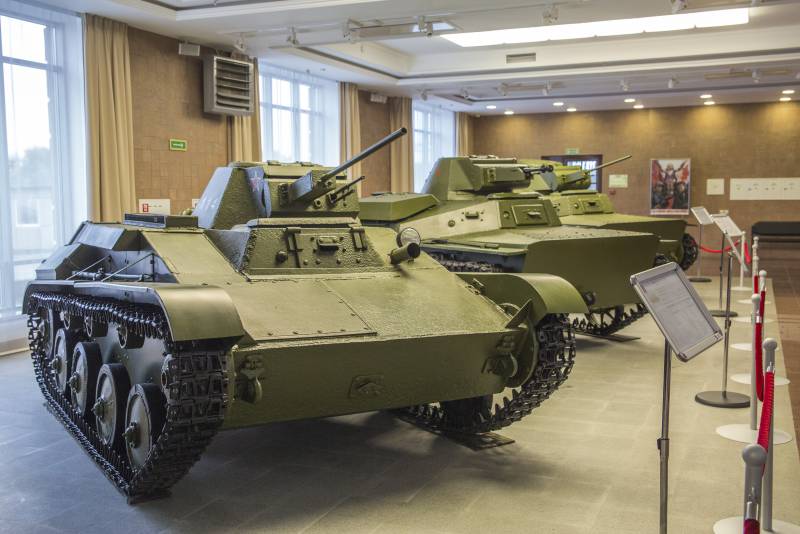
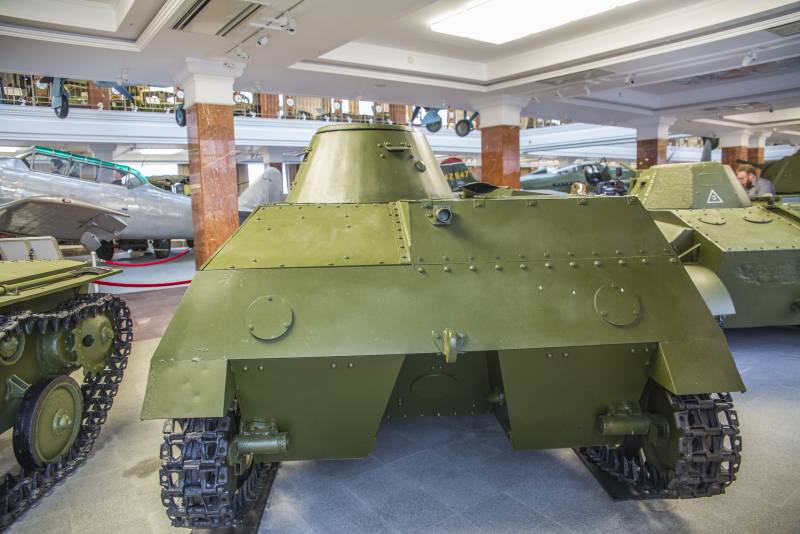
Information